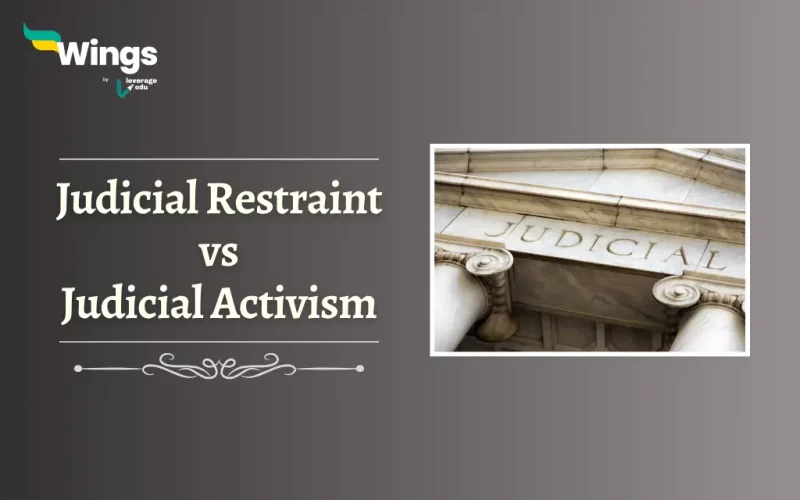In India, Judicial Restraint and Judicial Activism are approaches to the Judicial interpretation of the Indian Constitution similar to Judicial Review. Judicial Restraint means that judges should stick to interpreting laws, hence leaving lawmaking to Legislators and Executives. Moreover, they emphasise that judges must avoid letting personal beliefs sway their decisions. On the other hand, Judicial Activism is when the Judiciary takes a decisive role in protecting citizens’ Rights and promoting justice in society. Additionally, it means that the Judiciary assertively makes the Legislature and Executive fulfil their Constitutional Duties. Read on to learn more about the Difference between Judicial Restraint vs Judicial Activism in India.
Difference between Judicial Restraint and Judicial Activism
Additionally, here is the difference between Judicial Restraint and Judicial Activism:
| Judicial Restraint vs Judicial Activism: Table of Difference | ||
| Feature | Judicial Restraint | Judicial Activism |
| Focus | Stability and predictability of the law. | Protecting individual Rights and guaranteeing social justice. |
| Role of Judges | Judges exercise caution and refrain from interfering with Legislature or Executive actions unless they are Unconstitutional. | Judges take a more proactive role. Hence intervening in matters of public interest to uphold Rights and assure justice, even if it means challenging Legislative or Executive decisions. |
| Interpretation of Laws | Follows a strict and literal interpretation of laws and the Constitution. Therefore avoiding broad or creative interpretations. | May use creative interpretations and principles of law to expand Rights or address societal issues not explicitly covered in laws or the Constitution. |
| Review of Legislation | Upholds laws unless there is a clear violation of the Constitution. | More willing to overturn laws deemed incompatible with the Constitution or Fundamental Rights. |
| Approach to Public Policy | Typically avoids involvement in policy-making, thus believing it to be the domain of the Legislature. | Willing to step into policy areas to address perceived gaps or failures. Thus aiming to create societal change through legal decisions. |
| Examples | Kesavananda Bharati vs. State of Kerala in 1973 where the Supreme Court upheld the Basic Structure Doctrine. Hence showing restraint by not striking down the Constitution’s 24th Amendment. | Vishaka vs. State of Rajasthan in 1997 where the Supreme Court established guidelines to prevent sexual harassment in the workplace. Thereby showing Activism in addressing a societal issue. |
Thus, in Judicial Restraint vs Judicial Activism, the choice between these approaches can depend on the specific case and the need to balance people’s rights with the democratic process.
Related Blogs
Lastly, we hope you liked our blog and gained an understanding of Judicial Restraint vs Judicial Activism. Moreover, you may even read more blogs and empower yourself with knowledge regarding Civics and Polity!
 One app for all your study abroad needs
One app for all your study abroad needs















 45,000+ students trusted us with their dreams. Take the first step today!
45,000+ students trusted us with their dreams. Take the first step today!
